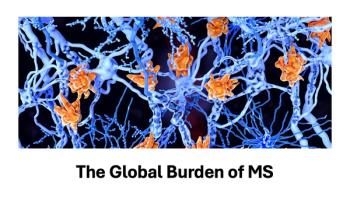
Three ways technology is improving the pharmaceutical industry
Technology in pharmacy is leading to improved safety, accountability, and efficiency.
Technology in pharmacy is nothing new, with e-prescribing coming on board more than a decade ago. In November 2005, CMS published the first set of adopted standards that applied to e-prescribing under Part D of the Medicare Modernization Act.
Between December 2008 and April 2014, the percent of doctors e-prescribing using an electronic health record (EHR) increased from 7% to 70%, according to the Office of the National Coordinator for Health Information Technology.
But that was just a start for the industry, which now embraces information exchange via EHRs, drug barcoding, computerized physician order entry, robotic dispensaries, automated medication identification, prior authorization, and drug verification.
GaleotaNicholas Galeota, director of pharmacy, SUNY Downstate Medical Center in Brooklyn, New York, says EHRs, e-prescribing and barcoding help ensure safety, such as avoiding overdosing, prescription errors and contraindicated drugs.
“The human eye can’t pick up every error or issue; you need a computer with certain criteria embedded,” he says. He points to “smart” infusion pumps, which have software that allows organizations to create a library of medications to help providers program and calculate dose and delivery rates, preventing errors and patient injury.
Technology that improves retail pharmacy safety
While technology is improving safety on the patient-provider side, retail pharmacies are also recognizing the benefits of technology.
PintoTiffany Natural Pharmacy, Westfield, New Jersey, has adopted the use of barcoded drug labels based on the National Drug Code to ensure accountability. The information in a barcode enables a comparison of a medication being administered with what was ordered for a patient so that patients receive the right drugs at the right time.
Brian Pinto, pharmacist-in-charge and owner of the five-store pharmacy that dispenses 2,200 prescriptions a week, says the business is deploying other technology to ensure safety and accountability.
A counting device called the Eyecon, integrated with the pharmacy software system, reads a barcode and displays pertinent information related to a prescription, such as quantity, patient name and drug name. Either a technician or pharmacist scans the barcodes on a prescription label and on a stock bottle to ensure they match.
A technician/pharmacist places the medication on a tray that counts the quantity and once it reaches the right amount, a screen displays a green light, allowing the pills to be dispensed after the Eyecon takes a photo of the tray. These pictures are readily available from the pharmacy software system.
Pinto says the next frontier is medication delivery to homebound patients. Patient signatures will be recorded with an iPad at the point of delivery.
While Pinto says he is not sure if technology has really saved him money, he knows he has reduced prescription errors and waste by ensuring the right drugs and doses are prescribed. “We are trying to stay on par with chains while still offering one-on-one, personal service,” he says.
Technology that streamlines processes
Each year, approximately 186 million prescriptions in the United States require prior authorization (PA). Of those, 40% are abandoned, resulting in the patient not receiving a medication due to the complex process associated with the traditional, paper PA process, according to CoverMyMeds. The company offers an electronic prior authorization (ePA) process and completes requests through an integrated clinical system or online web portal.
Pharmacists typically access ePA functionality though their pharmacy system, while prescribers can initiate or complete a PA request at the point of prescribing through their EHR systems or a free website.
ScantlandMatt Scantland, CEO/founder of CoverMyMeds, says ePA reduces administrative waste and long-term healthcare costs, while improving care provided by pharmacists and doctors. He says ePA can reduce a health plan’s operational costs for processing a PA from $40 per request to less than $20.
Michael Bukach, vice president, pharmacy chain accounts for the company, says ePA provides “one stop shopping” so that pharmacists and physicians can use a standardized, single electronic process rather than navigating dozens of proprietary health plan systems.
CoverMyMeds is working with pharmacy customers on decision support to automate more of the ePA work flow; with its provider and EHR partners to expose the ePA process in the prescribing work flow; and with payers to apply their coverage rules in real-time so they become a new kind of decision support at the point of prescribing.
Technology that reduces prescribing errors
Phoenix Children’s Hospital, a 465-licensed bed, freestanding children’s hospital, rolled out a dose-range checking system in 2011 specifically for pediatric patients.
“There was no dose information for patients under 18 years old so we needed to tailor a system to the prescription habits of our patients and doctors,” says Vanessa Holton, PharmD, specialty leader, inpatient pharmacy, Phoenix Children’s Pharmacy.
The new system coupled these data with drug dosage reference information and input from pharmacists and physicians, and defined thresholds for “very high” and “dangerously high” doses.
Holton’s colleague Rhonda Kurz, PharmD, specialty leader, explains how a wide range in weight among patients at the children’s hospital and lack of a frame of reference for doses outside normal parameters makes it difficult to maintain a dose range checking system. Errors, she says, could just be a matter of a hundredth of a decimal point.
Phoenix also created a two-tiered, alert system within the EHR system that notifies prescribers at the time of order entry about dosing. When a prescribed dose exceeds a “very high” range, the system generates a soft stop-alert requiring a provider to double check the order, amend as needed or note why he/she is prescribing the dose.
If a prescription exceeds a “dangerous” dose, a hard stop alert fires, preventing physicians from proceeding with the order without first consulting directly with a pharmacist.
Since the program’s inception, there has not been a single prescription overdose error.
Mari Edlin is a frequent contributor to Managed Healthcare Executive. She is based in Sonoma, California.
Newsletter
Get the latest industry news, event updates, and more from Managed healthcare Executive.






















































